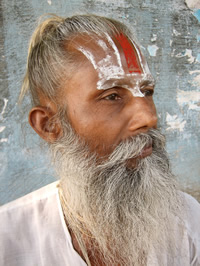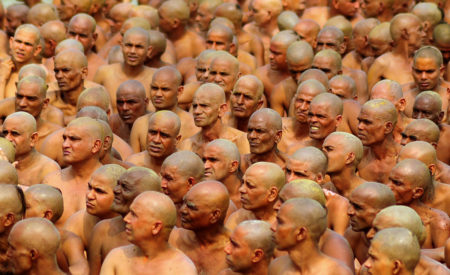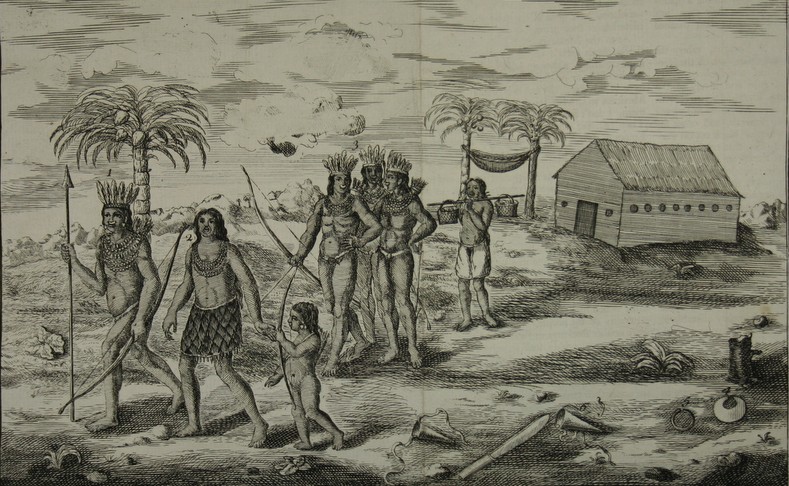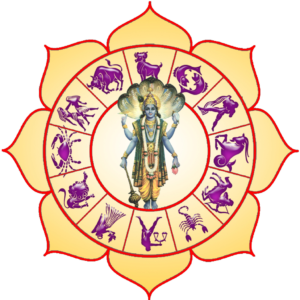Upanishads
 Ātman is a central idea in all the Upanishads, and “Know your Ātman” their thematic focus. These texts state that the core of every person’s self is not the body, nor the mind, nor the ego, but Ātman – “Soul” or “Self”. Atman is the spiritual essence in all creatures, their real innermost essential being. It is eternal, it is the essence, it is ageless. Atman is that which one is at the deepest level of one’s existence.
Ātman is a central idea in all the Upanishads, and “Know your Ātman” their thematic focus. These texts state that the core of every person’s self is not the body, nor the mind, nor the ego, but Ātman – “Soul” or “Self”. Atman is the spiritual essence in all creatures, their real innermost essential being. It is eternal, it is the essence, it is ageless. Atman is that which one is at the deepest level of one’s existence.
Brihadaranyaka Upanishad
The Brihadaranyaka Upanishad describes Atman as that in which everything exists, which is of the highest value, which permeates everything, which is the essence of all, bliss and beyond description. In hymn 4.4.5, Brihadaranyaka Upanishad describes Atman as Brahman (Universal Absolute, Supreme Soul), and associates it with everything one is, everything one can be, one’s free will, one’s desire, what one does, what one doesn’t do, the good in oneself, the bad in oneself.
This theme of Ātman, that is Soul and Self of one self, every person, every being is same as Brahman, is extensively repeated in Brihadāranyaka Upanishad. The Upanishad asserts that this knowledge of “I am Brahman“, and that there is no difference between “I” and “you”, or “I” and “him” is a source of liberation, and not even gods can prevail over such a liberated man. For example, in hymn 1.4.10,
Katha Upanishad
Along with the Brihadāranyaka, all the earliest and middle Upanishads discuss Ātman as they build their theories to answer how man can achieve liberation, freedom and bliss. The Katha Upanishad, for example, explains Atman as immanent and transcendent innermost essence of each human being and living creature, that this is one, even though the external forms of living creatures manifest in different forms, for example, in hymns 2.2.9 and others, its states
so does the internal Ātman of all living beings, though one, takes a form according to whatever He enters and is outside all forms.Katha Upanishad, 2.2.9
Katha Upanishad, in Book 1, hymns 3.3 to 3.4, describes the widely cited analogy of chariot for the relation of “Soul, Self” to body, mind and senses. Stephen Kaplan translates these hymns as, “Know the Self as the rider in a chariot, and the body as simply the chariot. Know the intellect as the charioteer, and the mind as the reins. The senses, they say are the horses, and sense objects are the paths around them“. The Katha Upanishad then declares that “when the Self [Ātman] understands this and is unified, integrated with body, senses and mind, is virtuous, mindful and pure, he reaches bliss, freedom and liberation”.
Chandogya Upanishad
The Chandogya Upanishad explains Ātman as that which appears to be separate between two living beings but isn’t, that essence and innermost, true, radiant self of all individuals which connects and unifies all. In hymn 4.10.1 through 4.10.3, for example, it explains it with example of rivers, some of which flow to the east and some to the west, but ultimately all merge into the ocean and become one. In the same way, the individual souls are pure Being, states the Chandogya Upanishad, individual soul is pure Truth, and individual soul is a manifestation of the ocean of One Universal Soul.
Schools of thought
 All major orthodox schools of Hinduism – Nyaya, Vaisesika, Samkhya, Yoga, Mimamsa and Vedanta – accept the foundational premise of Vedas and Upanishads that “Ātman exists”. Jainism too accepts this premise, though it has its own perspective on what that means. In contrast, both Buddhism and the Charvakas deny that there is anything called as “Ātman, Soul, Self”.
All major orthodox schools of Hinduism – Nyaya, Vaisesika, Samkhya, Yoga, Mimamsa and Vedanta – accept the foundational premise of Vedas and Upanishads that “Ātman exists”. Jainism too accepts this premise, though it has its own perspective on what that means. In contrast, both Buddhism and the Charvakas deny that there is anything called as “Ātman, Soul, Self”.
Knowing Ātman, also referred to as Self-knowledge, is one of the defining themes of all major orthodox schools of Hinduism, but they diverge on how. Self-knowledge, in Hinduism, is the knowledge and understanding of Atman, what it is, and what it is not. Hinduism considers Atman as distinct from the ever-evolving individual personality characterized with Ahamkara (ego, non-spiritual psychological I-ness Me-ness), habits, prejudices, desires, impulsiveness, delusions, fads, behaviors, pleasures, sufferings and fears. Human personality and Ahamkara shift, evolve or change with time, state the schools of Hinduism; while, Atman doesn’t. Atman, state these schools, is the unchanging, eternal, innermost radiant self that is unaffected by personality, unaffected by ego of oneself, unaffected by ego of others; Atman is that which is ever-free, never-bound, one that seeks, realizes and is the realized purpose, meaning, liberation in life. Puchalski states, “the ultimate goal of Hindu religious life is to transcend individually, to realize one’s own true nature”, the inner essence of oneself, which is divine and pure.
Vedanta school
Philosophical schools such as Advaita (non-dualism) see the “spirit, soul, self” within each living entity as being fully identical with Brahman – the Universal Soul. Advaita school holds that there is One Soul that connects and exists in all living beings, regardless of their shapes or forms, there is no distinction, no superior, no inferior, no separate devotee soul (Atman), no separate God soul (Brahman). The Oneness unifies all beings, there is divine in every being, and that all existence is a single Reality, state the Advaita Vedanta Hindus. In contrast, devotional sub-schools of Vedanta such as Dvaita (dualism) differentiate between the individual Atma in living beings, and the Supreme Atma (Paramatma) as being separate.
Advaita Vedanta philosophy considers Atman as self-existent awareness, limitless and non-dual. To Advaitins, the Atman is the Brahman, the Brahman is the Atman, each Self is non-different from the infinite. Atman is the Universal Principle, one eternal undifferentiated self-luminous consciousness, the Truth asserts Advaita Hinduism. Human beings, in a state of unawareness and ignorance of this Universal Self, see their “I-ness” as different than the being in others, then act out of impulse, fears, cravings, malice, division, confusion, anxiety, passions, and a sense of distinctiveness. Atman-knowledge, to Advaitins, is that state of full awareness, liberation and freedom which overcomes dualities at all levels, realizing the divine within oneself, the divine in others and all living beings, the non-dual Oneness, that God is in everything, and everything is God. This identification of individual living beings/souls, or jiva-atmas, with the ‘One Atman’ is the non-dualistic Advaita Vedanta position.
The monist, non-dual view of existence in Advaita Vedanta is not accepted by the dualistic/theistic Dvaita Vedanta. Dvaita Vedanta calls the Atman of a Supreme Being as “Paramatman”, and holds it to be different from individual Atman. Dvaita scholars assert that God is the ultimate, complete, perfect but distinct Soul, one that is separate from incomplete, imperfect Jivas (individual souls). Advaita sub-school believes that Self-knowledge leads to liberation in this life, while Dvaita sub-school believes that liberation is only possible in after-life as communion with God, and only through the grace of God (if not, then one’s Atman is reborn). God created individual souls, state Dvaita Vedantins, but the individual soul never was and never will become one with God; the best it can do is to experience bliss by getting infinitely close to God. The Dvaita school, therefore, in contrast to monistic position of Advaita, advocates a version of monotheism wherein Brahman is made synonymous with Vishnu (or Narayana), distinct from numerous individual Atmans. Dvaita school, states Graham Oppy, is not strict monotheism, as it does not deny existence of other Gods and their respective Atman.
The Vedanta sub-schools of Vishishtadvaita Vedanta and Achintya Bheda Abheda combine ideas about Ātman from dual and non-dual schools.
Mimamsa school
Ātman, in the ritualism-based Mīmāṃsā school of Hinduism, is an eternal, omnipresent, inherently active essence that is identified as I-Consciousness. Unlike all other schools of Hinduism, Mimamsaka scholars considered ego and Atman as same. Within Mimamsa school, there were divergence of views. Kumārila, for example, held that Atman is the object of I-Consciousness, while Prabhakara held Atman is the subject of I-Consciousness.
Mimamsaka Hindus believed that what matters is virtuous actions and rituals completed with perfection, and it is this that creates merit and imprints knowledge on Atman, whether one is aware or not aware of Atman. Their foremost emphasis was formulation and understanding of laws/duties/virtuous life (dharma) and consequent perfect execution of kriyas (actions). The Upanishadic discussion of Atman, to them, was of secondary importance. While other schools disagreed and discarded the Atma theory of Mimamsa, they incorporated Mimamsa theories on ethics, self-discipline, action and dharma as necessary in one’s journey towards “Know your Atman“.
Vaiśeṣika school
The Vaisheshika school of Hinduism, using its non-theistic theories of atomistic naturalism, posits that Ātman is one of the four eternal non-physical substances without attributes, the other three being kala (time), dik (space) and manas (mind). Time and space, stated Vaiśeṣika scholars, are eka (one), nitya (eternal) and vibhu (all pervading). Time and space are indivisible reality, but human mind prefers to divide them to comprehend past, present, future, relative place of other substances and beings, direction and its own coordinates in the universe. In contrast to these characteristics of time and space, Vaiśeṣika scholars considered Ātman to be many, eternal, independent and spiritual substances that cannot be reduced or inferred from other three non-physical and five physical dravya (substances). Mind and sensory organs are instruments, while consciousness is the domain of “atman, soul, self”.
The knowledge of Ātman, to Vaiśeṣika Hindus, is another knowledge without any “bliss” or “consciousness” moksha state that Vedanta and Yoga school describe.
Nyaya school
Early atheistic and later theistic Nyaya scholars, both, made substantial contributions to the systematic study of Ātman. They posited that even though “self, soul” is intimately related to the knower, it can still be the subject of knowledge. John Plott states that the Nyaya scholars developed a theory of negation that far exceeds Hegel’s theory of negation, while their epistemological theories refined to “know the knower” at least equals Aristotle’s sophistication. Nyaya methodology influenced all major schools of Hinduism.
The Nyaya scholars defined Ātman as an imperceptible substance that is the substrate of human consciousness, manifesting itself with or without qualities such as desires, feelings, perception, knowledge, understanding, errors, insights, sufferings, bliss and others. Nyaya school not only developed its theory of Atman, it contributed to Hindu philosophy in a number of ways. To the Hindu theory of Ātman, the contributions of Nyaya scholars were twofold. One, they went beyond holding it as “self evident” and offered rational proofs, consistent with their epistemology, in their debates with Buddhists, that “Atman exists”. Second, they developed theories on what “Atman is and is not”. As proofs for the proposition “Self, Soul exists”, for example, Nyaya scholars argued that personal recollections and memories of the form “I did this so many years ago” implicitly presume that “there is a Self that is substantial, continuing, unchanged and existent”.
Nyayasutra, a 2nd-century CE foundational text of Nyaya school of Hinduism, states that the Soul is a proper object of human knowledge. It also states that Soul is a real substance that can be inferred from certain signs, objectively perceivable attributes. For example, in Book 1, Chapter 1, verses 9 and 10, Nyayasutra states
Desire, aversion, effort, happiness, suffering and cognition are the Linga (लिङ्ग, mark, sign) of the Ātman. Nyaya Sutra, I.1.9-10
In Book 2, Chapter 1, verses 1 to 23, Nyayasutras text posits that sensory act of looking is different than perception and cognition, that perception and knowledge arise from the seekings and actions of Ātman (Soul). Naiyayikas emphasize that Ātman has qualities, but is different than its qualities. For example, desire is one of many quality of Ātman in Nyaya school, but they state that Ātman need not always have desire, and in the state of liberation, for instance, Atman is without desire. Atman is the object, and the conventional “I, me” is one of its subjects, to Nyaya school.
Samkhya school
The concept of Ātman in Samkhya, the oldest school of Hinduism, is quite similar to one in Advaita Vedanta school. Both Samkhya and Advaita consider the ego (asmita, ahamkara) rather than the Ātman to be the cause of pleasure and pain. They both consider Ātman as self, soul that is innermost essence of any individual being. Further, they both consider self-knowledge as the means of liberation, freedom and bliss.
The difference between Samkhya and Advaita is that Samkhya holds there are as many Atmans as there are beings, each distinct reality unto itself, and self-knowledge a state of Ipseity. In contrast, the monism theme of Advaita holds that there is One Soul, the Self of each and all beings are connected and unified with Brahman. The essence and spirit of everything is related to each Self, asserts Advaita Vedanta, and each Atman is related to the essence and spirit of everything, all is One, Self is Brahman and Brahman is Self. Samkhya asserts that each being’s Atman is unique, different.
Yoga school
The Yogasutra of Patanjali, the foundational text of Yoga school of Hinduism, mentions Atma in multiple verses, and particularly in its last Book where Samadhi is described as the path to Self-knowledge and kaivalya. Some earlier mentions of Atman in Yogasutra include verse 2.5, where evidence of Ignorance includes “confusing what is not Atman as Atman”.
Avidya (अविद्या, Ignorance) is regarding the transient as eternal, the impure as pure, the pain-giving as joy-giving, and the non-Atman as Atman.Yogasutra 2.5
In verses 2.19-2.20, Yogasutra declares that pure ideas is the domain of the Soul, the perceivable Universe exists to enlighten the Soul, but while the Soul is pure, it may be deceived by complexities of perception or his intellect. These verses also set the purpose of all experience as a means to Self-knowledge.
तदर्थ एव दृश्यस्यात्मा
The Seer (Soul) Is the absolute knower. Though pure, modifications are witnessed by Him by coloring of intellect.
The spectacle exists only to serve the purpose of the Atman.Yogasutra 2.19-20
In Book 4, Yogasutra states spiritual liberation as the stage where the yogin achieves distinguishing self-knowledge, he no longer confuses his mind as his soul, the mind is no longer affected by afflictions or worries of any kind, ignorance vanishes, and “pure consciousness settles in its own pure nature”
The Yoga school is similar to the Samkhya school in its conceptual foundations of Ātman. It is the Self that is discovered and realized in the Kaivalya state, in both schools. Like Samkhya, this is not a single universal Ātman. It is one of the many individual selves where each “pure consciousness settles in its own pure nature”, as a unique distinct Soul, Self. However, Yoga school’s methodology was widely influential on other schools of Hindu philosophy. Vedanta monism, for example, adopted Yoga as a means to reach Jivanmukti – self-realization in this life – as conceptualized in Advaita Vedanta.



